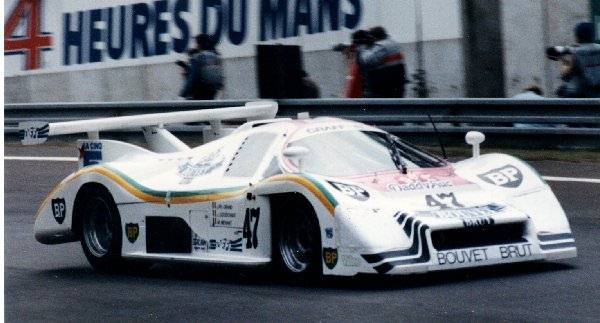
Late model Rondeau on their home track; Le Mans

Jean Rondeau became a hero of France, when he, driving a car of his own manufacture (albeit powered by a Ford Cosworth engine) took victory in the wet 1980 Le Mans 24 hour race.
The Le Mans based Rondeau team went on to become a manufacturer of Group C cars and performed well, if not quite to Porsche standards, in the early days with their radical looking cars. Sadly Jean was killed in a road accident and the team folded.
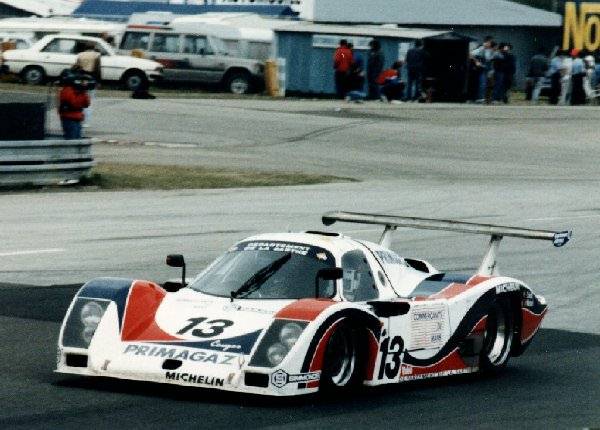
Yves Courage Cougar (later Courage) team have been attempting to win Le Mans for years. They get close (podiums are far from unknown), but the Le Mans based team just never seem to get the breaks to take the top step.
Starting with Porsche powered Group C cars of their own design, Courage have moved on to running open top prototypes at Le Mans, powered by Nissan, Chevrolet and Porsche engines and attract drivers of the calibre of Mario and Michael Andretti to their cars.
A sense of injustice will prevail if Courage never win Le Mans, but they really need a tie up with a major manufacturer to get an engine with enough power and good enough consumption to do the job.

Lotus were well established in the sportscar racing arena of the 60s, but a serious falling out with the ACO, led to them withdrawing from racing at Le Mans for many years.
After Colin Chapman's death and the many changes of ownership since, Lotus finally returned to top class sportscar racing with the launch of the V8 Esprit in 1996. The car showed great promise, but was replaced for the following season with a lighter, Elise based car, the GT1.
The GT1 was hit hard by a late change of engine, when the turbocharged V8 was dropped in favour of the LT1 engine developed for the Chevrolet Corvette when Lotus was owned by GM. This seemed to disrupt development of the GT1 and, despite being a fast car by most standards, it lagged behind the McLarens and Mercedes.
Marcos are a small manufacturer from Westbury, England. Like Lotus, they started off building 750 specials and grew into a fairly major manufacturer of sportscars in the 1960s. Unlike Lotus, they went bust in the 1970s and only really found their feet again in the mid-90s.
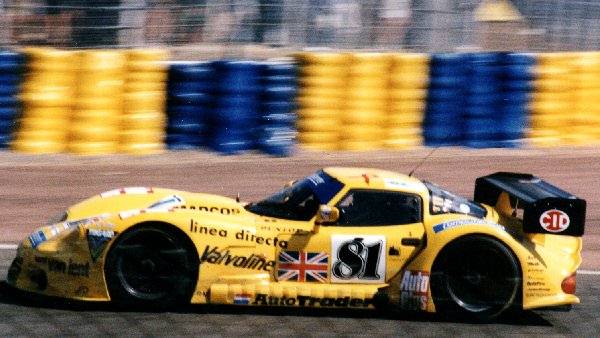
It was decided that the best way to make a big impact in the world of sportscars (against such luminaries as Porsche and TVR) was to go racing. The first LM500s, with modified Rover V8s were ok for domestic competition, but a more powerful and aerodynamically advanced device was needed for world-class competition.
The LM600 was powered by a NASCAR spec Chevrolet V8 of 6 litres. The team bought two cars to Le Mans in 1995, despite only competing in the UK domestic series before. The cars didn't even get classified, but, with a rumble reminiscent of the Sauber Mercedes they won the hearts of the crowd and one did make it to the end of the race, earning the team the Mechanic's Award.
In 1996, Cor Euser's semi works team ran a car in the BPR GT2 class and won its class a number of times, despite being hugely outnumbered by the Porsches.
1997 saw the Dodge Vipers drop into GT2, but the Marcos was still competitive, although the greater pressure of the V10 Dodges seemed to lead to a loss of reliability.
Marcos (especially under Cor Euser's stewardship) continue to make an impression on the international GT scene into the 3rd millenium, taking both the British and Spanish GT titles in 2000, along with a class win in the Suzuka 1000.
Even as late as 2004, and with another closure and resurrection behind it, Marcos cars continue to win races. In Spain, an LM600 looks a good bet for champion and a Mantis has won the GT Cup class a number of times in the British GT Championship.

Ford had achieved sportscar greatness in the 60s with the evergreen GT40 and much was expected of their return to sportscar racing with the C100. However, it was cursed by a 3.9 litre development of the DFV engine, which just plain wasn't reliable and the ridiculous scenes of the two C100s being raced side by side around Brands in the streaming wet was both exciting and bound to end in disaster. It did, both cars being heavily damaged and the programme was canned shortly afterwards, despite showing signs of progress.
Zakspeed resurected one of the cars, but it was rarely seen on the international scene, mainly being used in Germany's domestic series.
The Dodge Viper caused a stir when it was launched, being widely compared to the AC Cobra. With such bold and astute marketing people, it was only a matter of time before the Viper showed its mettle on the international racing scene.

Dodge originally entered the front engined, V10 machines in GT1 and showed well against the McLarens, but in 1997 they dropped into GT2, stating their unwillingness to build a 'prototype' like the 911 GT1 or Mercedes. The V10 only lost around 40BHP and it immediately became the pace setter in the class.
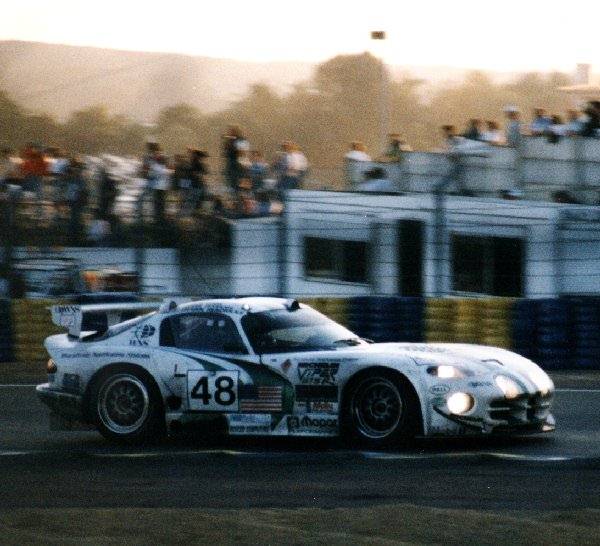
The original style Viper GTR-S has taken part in hundreds of sportscar races and continued to be competitive well into the 2000s. That model was replaced in 2003, but, as yet, a racing version has not appeared to take up the challenge.


Numerous other manufacturers, large and small, have come and gone from Sportscar racing.
March were a big name in racing car manufacturing and their 89G had reasonable success in IMSA in the US, but was never more than an infrequent visitor to the WSC.
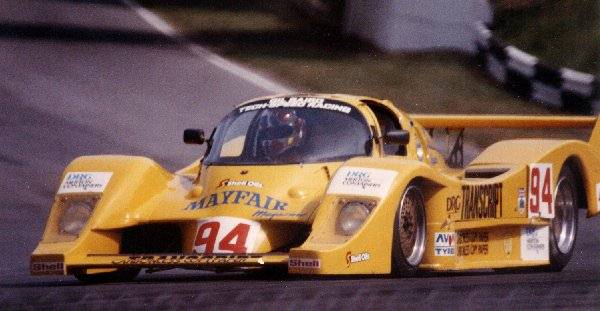
The GRID was commisioned by enthusiast, Ian Dawson. Despite its impressively modern looks, the Grid was heavy and suffered from using the unreliable DFL 3.9 engine. A second chassis was run, with a 3.3 engine and it achieved a couple of top 10 placings.
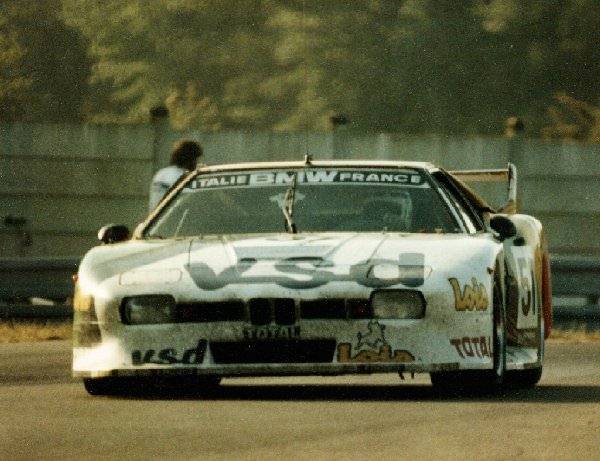
BMW have long been supporters of saloon car racing, but their involvement in sportscar racing is patchy. In the late 70s they produced a mid-engined sportscar, the M1. This was intended to take them head to head with Porsche in Groups 4 and 5. However, the car was never developed properly and the change to Group C arrived before the car could perform to its full potential. BMW then switched their attentions to F1, with great success.
In the 90s, McLaren turned to BMW for a bespoke V12 for their F1. This, in turn, has led to BMW making a works entry into the GT series with the Schnitzer team running McLaren F1s.